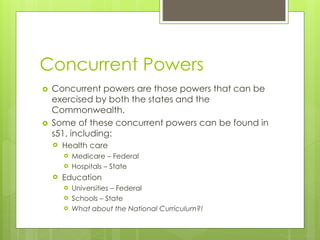This document discusses the key sources of Australian law, including the Australian Constitution and state constitutions. It outlines how legislative power is divided between the Federal Parliament and state governments. The Constitution established in 1901 divides powers into exclusive Commonwealth powers, residual state powers, and some concurrent areas. The High Court plays an important role in interpreting the Constitution and resolving disputes over which level of government has authority in different policy areas.




















